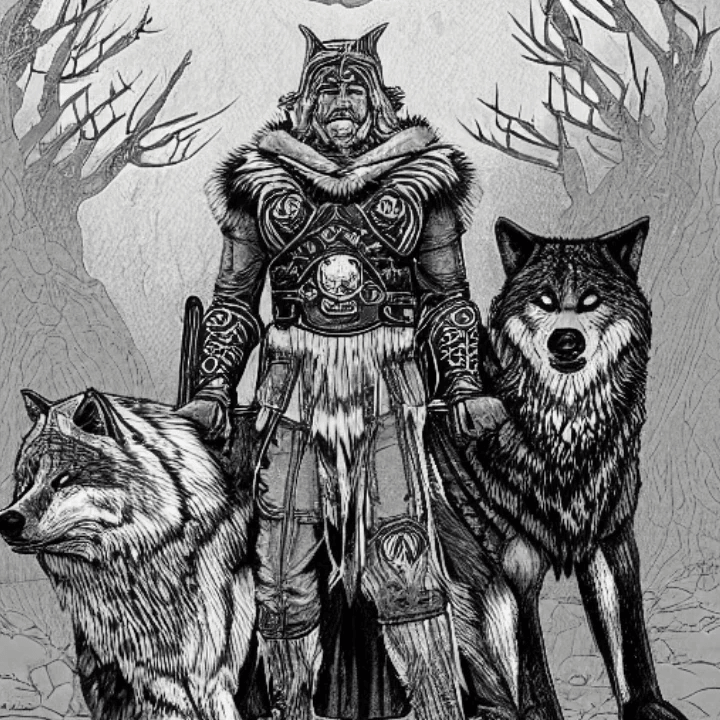Thor’s Hammer Mjölnir and its Thundering Impact on Culture
When one thinks of Norse mythology, images of fierce gods, dark creatures, and great battles immediately come to mind. But, arguably, the most famous Norse figure is Thor, the god of thunder, whose hammer, Mjölnir, is one of the most iconic symbols in all of mythology. Mjölnir's popularity has rippled throughout society for centuries, appearing in everything from artwork to pop culture — most notably in Marvel's hugely popular Thor comic books and movies.

But what is the story behind this special weapon? What made it so unique that it has been revered for centuries? In this blog post, we'll look at the history and mythology of Mjölnir and see why it remains such a famous symbol today.
Forging the Legend
Mjölnir has a surprisingly humble origin story for a weapon of great power, one not particularly demonstrative of Thor's all-powerful might. The Creation of Thor's Hammer, as told in the Prose Edda, a 13th-century Norse text, goes as follows:
One day, Loki, the god of mischief and trickery, cut off the beautiful golden hair of Sif, Thor's wife, as a prank. Upon discovering what Loki had done, Thor was so enraged that he vowed to kill Loki. However, with his masterful and cunning ability to escape danger, Loki pleaded for his life and offered to replace Sif's hair with new hair made of gold, which put her original locks to shame. Not only would it be forged by the most skilled dwarves, but it would also grow and flow like natural hair.
Reluctantly, Thor agreed to spare Loki's life, and Loki went off to fulfill his end of the bargain. But, first, he traveled to Svartheim, the home of the dwarves, and there he commissioned craftsmen dwarves, sons of the dwarf Ivaldi, to create the new hair.
Sons of Ivaldi set to work, and, using only their bare hands and a single anvil, they created Sif's new hair out of pure gold among several other treasures. But Loki, being the trickster that he is, wasn't content with just fulfilling his bargain. He wanted more, so he placed a bet with two dwarven brothers, Brokkr and Sindri, that they couldn't create another object as fine as Sif's hair crafted by their competitors. Loki was so confident that he even offered his head as collateral.
The dwarves, not ones to back down from a challenge, set to work again. Loki knew the expert craftsmanship of these dwarves, and he soon began to worry that he might lose his bet. In a last-ditch effort to foil their work, Loki turned himself into a fly and buzzed around the dwarves, biting and stinging them to distract them.
Nevertheless, the dwarves created a massive and mighty hammer named Mjölnir among several other lesser treasures. However, due to Loki's interference, the hammer's handle was shorter than it should have been, rendering it less than perfect.

No matter the flaw, Mjölnir was an incredible weapon, and it became Thor's most treasured possession. With Mjölnir in hand, Thor could conquer foes, giants, and gods. It was said that when Thor struck his hammer against the ground, lightning would flash, and thunder would roar. The hammer was so mighty that it could even return to Thor's hand after he threw it, making it the perfect weapon for a god of thunder. Mjölnir was so powerful that only those with great strength could lift it.
Cultural Significance of Mjölnir
The reverence for Mjölnir exists not just because of its god-like power but because of what it represents. In Norse mythology, Mjölnir was a tool used to bring about change — specifically, the change from winter to summer. This change was of utmost importance for a culture that relied so heavily on agriculture in its traditions (Samhain, for example, was a celebration of the harvest and the prototype for modern-day Halloween).
Not only did Mjölnir represent the change of seasons, but it also came to symbolize fertility, as Thor was known for his ability to make things grow. Fertility applied to agricultural and human fertility, making Mjölnir a famous symbol of new life and beginnings.
But most of all, Mjölnir was a symbol of strength. To the Viking warrior, Mjölnir represented the power to fight and defend one's family and tribe. It was a talisman to be worn into battle, hoping that Thor would lend his strength to the wearer in their time of need.
During the Christianization of Scandinavia, Mjölnir did not disappear. It continued to be used as a symbol, albeit a hidden one. Christians were actively discouraged from wearing pagan symbols, so many Viking warriors took to wearing Mjölnir around their necks but underneath their clothes where it could not be seen. In this way, they could publicly profess their Christian faith while secretly paying homage to the old ways.
From its inception to its lasting legacy, Mjölnir has been an essential part of Norse culture and mythology. It symbolizes strength and power but also change and new beginnings. Change is scary, whether making changes in our lives or simply watching the world change around us. Symbolically, it's no coincidence that Mjölnir is a hammer — a tool used to shape and change the world around us. Just as Thor used his hammer for destruction, he also used it to build and create. That's the true power of Mjölnir and something we can all aspire to.









